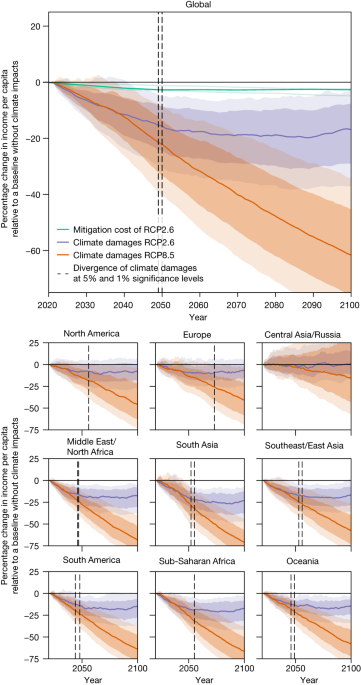I see the sea level as a function of temperature but not much related to Human caused climate change.
That's pretty silly. Why on Earth would you think that?
Assume we achieve Net Zero CO2 emissions (We will but because of market conditions)
do you think that will alter the sea level rise, or even the trajectory of the climate for that matter.
Yes, it would make a difference—but not instantly, and not enough to reverse the damage already in motion. Because of the long memory of the climate system, especially the oceans and ice sheets, the effects of past emissions will continue to unfold for decades or even centuries. However, achieving net-zero emissions would be the
decisive turning point between a future of worsening climate instability and one of eventual stabilization.
The Inertia of the Climate System
To understand why, we must grasp a key concept:
climate inertia. Greenhouse gases like CO₂ linger in the atmosphere for centuries. Once emitted, they continue to trap heat and warm the planet long after the factories or vehicles that produced them are gone. The oceans, which absorb 90% of that heat, respond slowly—taking decades to fully reflect atmospheric warming. Likewise, the large ice sheets of Greenland and Antarctica melt not instantly, but over time in response to sustained warming.
This means that
sea level rise is already “baked in” to some extent—even if we stopped emitting CO₂ tomorrow. Studies suggest that even if global temperatures stabilize at 1.5°C, sea levels will continue to rise for centuries due to thermal expansion and ice sheet melt.
 Reference
Reference: Mengel, M., et al. (2016).
Future sea level rise constrained by observations and long-term commitment.
Proceedings of the National Academy of Sciences, 113(10), 2597–2602.
https://doi.org/10.1073/pnas.1500515113
What Happens When We Reach Net Zero?
Reaching net-zero doesn’t instantly cool the planet—it
stops the warming from getting worse. Without new emissions, CO₂ concentrations level off. Over time, natural processes (like ocean and forest absorption) can begin to slowly draw atmospheric CO₂ down. This sets the stage for long-term climate stabilization.
For sea level, this means that
we can slow the rate of rise, and potentially avoid catastrophic high-end scenarios. For example, under a “business as usual” trajectory (RCP8.5), global sea levels could rise more than 1 meter by 2100. Under strong mitigation scenarios consistent with net-zero (RCP2.6 or SSP1-2.6), that number is closer to 0.3–0.5 meters.
 Reference
Reference: IPCC Sixth Assessment Report (AR6), Working Group I (2021). Chapter 9 – Ocean, Cryosphere and Sea Level Change.
https://www.ipcc.ch/report/ar6/wg1/
That is not a trivial difference. For low-lying cities and island nations, the difference between 0.4 meters and 1.1 meters can mean the difference between adaptation and inundation. It determines how much saltwater enters agricultural lands, how often coastal infrastructure floods, and how many millions of people are displaced.
The Market May Get Us There—But Timing Matters
You mention that net-zero will be achieved because of market conditions, not mandates. There is some reason for optimism here: renewable energy, electrification, and efficiency technologies are increasingly cost-competitive, often outperforming fossil fuels even without subsidies. That market trend is real and accelerating.
But the
pace of the transition is critical. If markets deliver net-zero by 2080 instead of 2050, the carbon budget for limiting warming to 1.5°C is likely blown. Every additional gigaton of CO₂ emitted locks in more warming, more ice melt, and more sea level rise. Net-zero is necessary, but
early net-zero is vastly more effective than late net-zero.
 Reference
Reference: Rogelj, J., et al. (2018).
Mitigation pathways compatible with 1.5°C in the context of sustainable development.
IPCC Special Report on 1.5°C.
https://www.ipcc.ch/sr15/
Conclusion: Net-Zero Matters—Profoundly
So will achieving net-zero CO₂ emissions change the trajectory of sea level rise or the climate? Absolutely. It won’t reverse the damage already in motion, but it will cap the eventual impacts. It can turn a future of compounding instability into one of manageable adaptation. And while market forces may be aligning in that direction, the timing—whether we reach net-zero in 2050 or 2080—will define the scope of human suffering and ecological loss.
In short:
climate change will not stop immediately when emissions do—but failing to stop them guarantees it never will.

